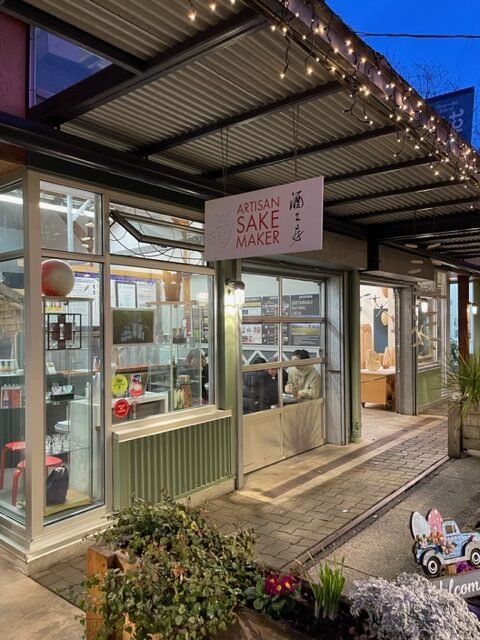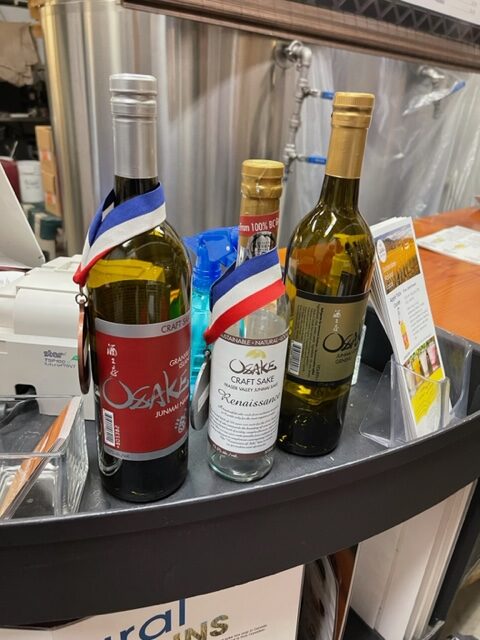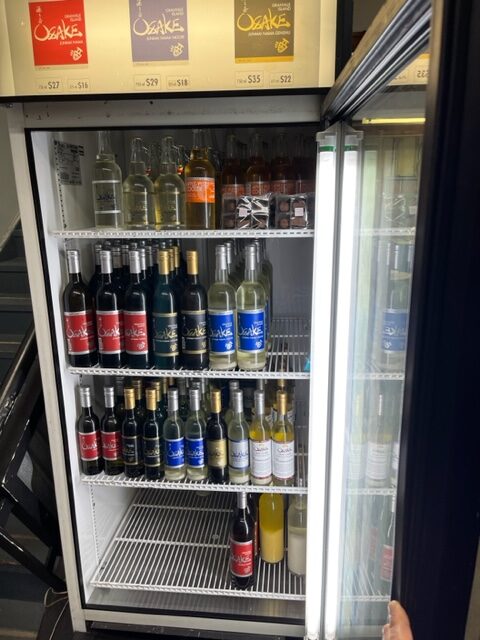
How and why did your company start production on Granville Island?
The reason why I chose Granville Island specifically was because it’s an international scene meaning that lot of people not only the locals or BC or Canada come here, but internationally they will visit. I wanted them to take this message back to their home country, there is an interesting small nano winery on Granville Island in British Columbia and it it’s pretty good; and that’s the reason why I chose that place.

Also, as everybody knows visiting Granville Island is not just for the for the public market to do shopping but there is abundant of artist and artisans that also a foster their skills and their specialties of their cultural heritage and that is very very attractive to come and see my sake operation.
How many years ago did you start making sake?
On January 15th we celebrated our 16th year anniversary, we started making sake in 2007. I think we will probably be continuing as far as my generation goes on another 10-15 years.

Has anything changed physically since you started?
You know everything is still done by hand. I mean pretty much we do it by hand in small batches and throughout the year. Over the years we have experimented with a variety of things and so the recipe changes it a little bit about pretty much it just stayed as it was that where we started 16 years ago so now we are doing something very kind of revolutionary.
Can you explain the process of how you ended up growing rice in the Fraser valley, doing that and how different it is or what I guess some people’s misconceptions are?
We can’t do this here but you’re doing it here well before I even thought about climate change. Why I decided to do this on my own is because a when I was studying wine back in a very early actually 2000 everybody talked about when you meet the right makers and then you talk about the crop this year and the weather the climate you know some of them said yeah we got a better cold by frost early in the spring therefore this is not going to be a very promising year something like that so it made me to think that you know we don’t have to worry about because we would buy rice from a source and at that time I was importing from Japan so I couldn’t actually join the conversation and that’s when I realized that I should actually do the research at least trying to grow my own ingredient and controlling it. Nobody was doing it so I just did it by visiting Japanese farm co-ops anokye to the northern Japan and also had a various hills along the way from d’equipe dealers.
That’s why we started and then over the years our first sort of theme of sustainable natural and local those elements you know had to be filled in about there was there was nothing more that you know that we could do we could we could think of doing the growing around ingredients in order to satisfy those three conditions.

Is all your sake being made with the rice from Fraser Valley ?
No unfortunately with an exception of the year 2015 and 16 where we had every bottle of sake price is the reason why we are trying to basically to do go back to 2015 is because I was a there hasn’t been any history of rice growing in Canada and no one had registered I’m talking about the size kind of things which I don’t really like myself of course but in order to make it easier for a farmer to grow then unfortunately those things are necessary to certain extent and so we still don’t have it because nobody bothered to register it and so by default we have to grow it organically and the nature is tough.
It’s more than about we could handle initially but we’re getting there we’re actually increasing our production to about 20% maybe 25% of the moment of the entire batch but you now remember we have added more production along the way so we are actually creating our own destiny to be even more difficult to satisfy the 100% PC content.
Are you making some other products as well?
In my business plan it had a use of by product which is called sake kasu and it’s what’s left after the second is essentially kind of moist a rice fermented rice cakes if you like and that is a goal to us because it can be can be used in culinary scenes like enhancing food soup stock and it also marinades and meat vegetables fish so chefs actually go crazy with this so-called umami bomb and it’s almost like a wonderful natural skin moisturizer so we also developed 6 lines of products under the banner of horizontally that’s a brand name and that’s pretty much takes care of even to the last you know grams of psychic answer and in fact are we kept you can’t make enough so you know we jokingly say that well our business is actually to produce circuit gases and so that means we add to make more second interesting .

Can you tell me what you would like people to see at Artisan SakeMaker?
For people who have not been there before they may not have seen our sake at a dinner party they may have had in a restaurant but they may have not known that we were on Granville Island. We are here for them to visit. The first thing that I would I hope is that people realize right away as soon as they start sipping on sake is that it’s different from a traditional Japanese style sake even though it’s 100% made from rice it actually has more acidity it actually has more fruity notes more aromatic this is the cheese and cold cuts for example which I love very much so we actually made our sake into a style for making food. I’m not saying that it is not going to go with sushi at sushi meal but it’s a given so that’s the first thing that I hope that the people would be noticing and we have three different kind of small foot print they would be enjoying it too to pair with the with three different sake and you can see this so you have three different sakes in your lineup is that correct yes for this happening at the moment companies that actually in production you make three different kinds of sake is that correct a lot more than that we have actually a 12 styles of sake including stopping and including a traditional method or clean circulator champagne of sake which is actually going to be in production producer so out of those we chose 3 original styles of sake for the further testing we are doing almost like 12 different types for the restaurant side of things when selling to restaurants and in restaurants. Sake would go with seafood better, another one would go with a very rich food the beef goes I mean the red mates and the another type would go with somewhere in between so seafood read these white meat you know that kind of categorisation if you like all of the Salem sake is the best time would first of all and then they choose from.
We are trying to make our products to go with a Canadian palate so definitely you know there are lots of good Japanese imports in the in town and those generally end up being served in the Japanese restaurants, so we have for example.
Artisan SakeMaker is located at 1339 Railspur Alley on Granville Island in Vancouver.
By: Richard Wolak
